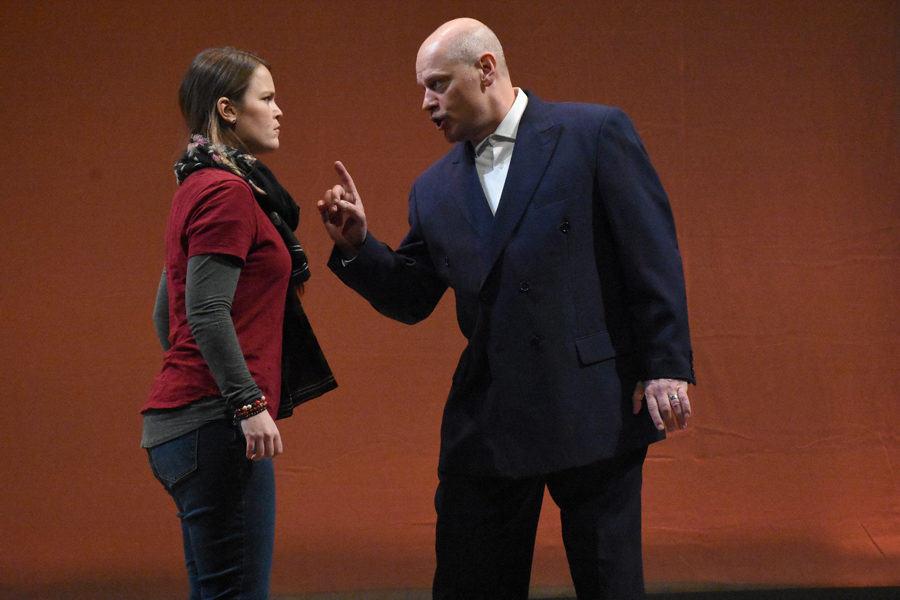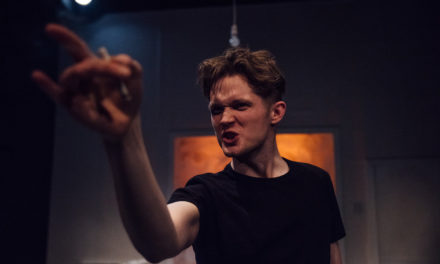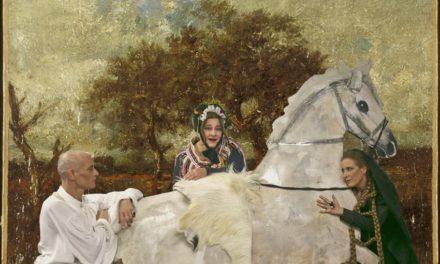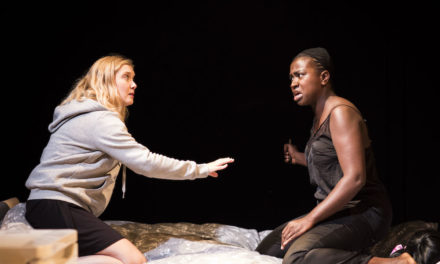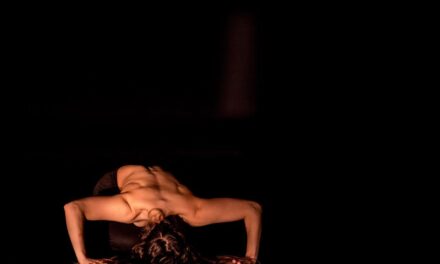Upon entering the theatre for Piramo E Tisbe, I was intrigued by the setup of the stage and the placement of the orchestra. On one side was a bed and blanket, and on the other side, an elaborate set up of an abandoned space taken over by the past of the Persian War, implying it would be inhibited by anyone seeking shelter. The orchestra consisted of five violinists, Danika Paskvan on viola, Anthony Albrecht on cello, David Ross on flute, two oboes, two bassoons, and Arash Noori on theorbo, and was conducted by Elliot Figg, who accompanied on the harpsichord. The instruments were un-mic’d which gave both a desire for more as well as feeling of being present in the space with the high tension.
The overture was full of beautiful moments including a solo from the concertmaster Toma Iliev. Summer Hassan, plays Tisbe. Hassan sang the opening aria In Van Strugi In Pianto with beautiful color gracefully moving through the runs. This was a strong invitation to the world Director Philip Shneidman wanted to create.
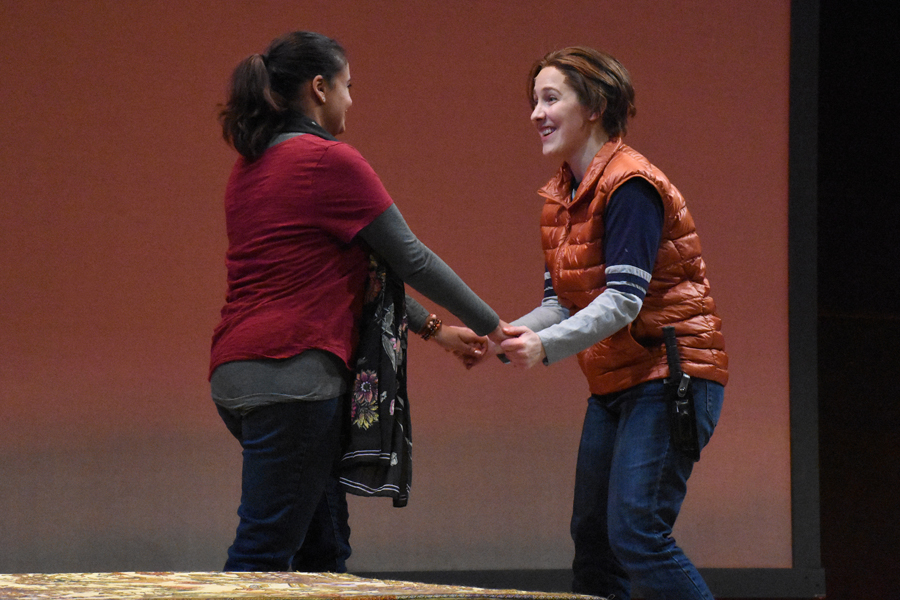
Tisbe (S.Hassan) and Piramo (S.Craft). Photo Credit: Tina Buckman
An intriguing choice was that LOTNY (the little Opera Theatre of NY) cast both Tisbe and Piramo as female, though whether or not the actual actor was playing a male or a masculine-presenting female was lost to me. Johann Adolf Hasse wrote this tragic intermezzo with three characters, two sopranos, one a daughter of the general, and a dramatic bass–the father thus leaving the interpretation of the second soprano open. Though widely influential as a composer during his time, Johann Adolf Hasse wrote mostly sacred music which does leave me to believe that the men during his period of writing would be able to sing a Soprano part. So, the choice to use he/him pronouns and a masculine presentation was a big attention pull for my brain in trying to decide if this was a modern adaptation or a conventional way around vocal parts.
This doesn’t take away from the beauty of every moment both Tisbe and Piramo share, and if anything allowed me to feel higher stakes. Sarah Nelson Craft, as Piramo, portrayed beautiful support and their acting was engaging every time they entered a scene. The humor in some of Piramo’s moments was pure and spot on, getting a good laugh from the audience and keeping up the energy of the show. Throughout the beginning half, I could visually see and tell the relationship between the singers and orchestra with their conductor; some of the most seemly transitions where there because of how intently the orchestra was watching and following the conductor, as well as the vocalist trusting in their orchestra and conductor to lead them through some of Hasse’s tenuous runs.
Though vocalist Summer Hassan could lead her “ee” vocal runs both freely and captively, it couldn’t quite hold the second half of the show, which too closely mirrors, unfortunately, the more popular counter shows Metamorphosis and A Midsummer Night’s Dream. The second half of the production feels as though a month could have passed between these deaths in the long soliloquies that are solo arias, detailing the pain of a loss. Though the idea of creating a bond with the audience through this time in our shared memory of grief seems apparent, there is no music or solo that helps push the second half along.
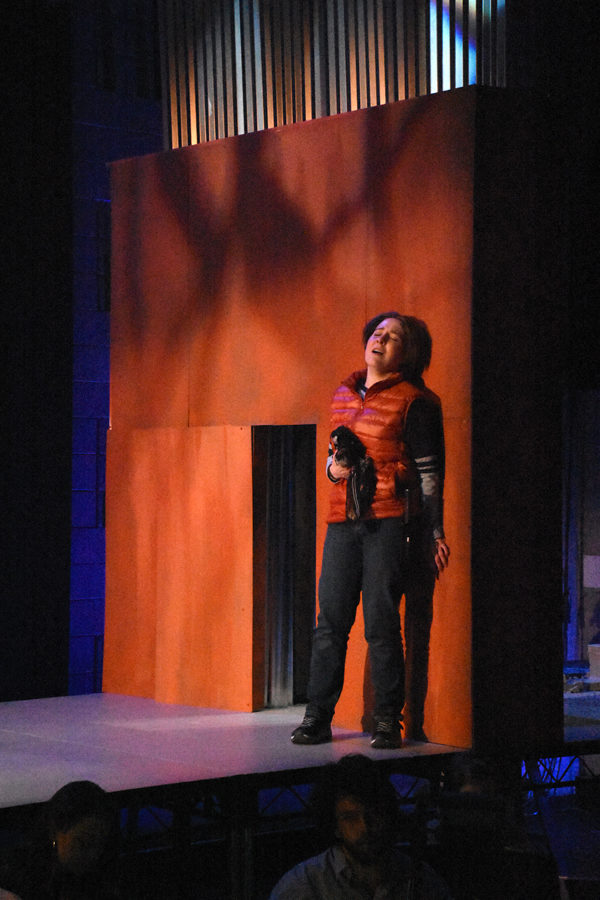
Photo credit: Tina Buckman
The production seemed thought out, an explorative interpretation of the text, and a beautiful presentation of instruments that are not normally included in smaller orchestras. Where it lacked in gender clarity or second act interest, it attempted to make up for it, with beautiful vocals, a range of sounds in its orchestra, and an underlining story a person from any generation could relate to.
This post was written by the author in their personal capacity.The opinions expressed in this article are the author’s own and do not reflect the view of The Theatre Times, their staff or collaborators.
This post was written by Janelle Lawrence.
The views expressed here belong to the author and do not necessarily reflect our views and opinions.

